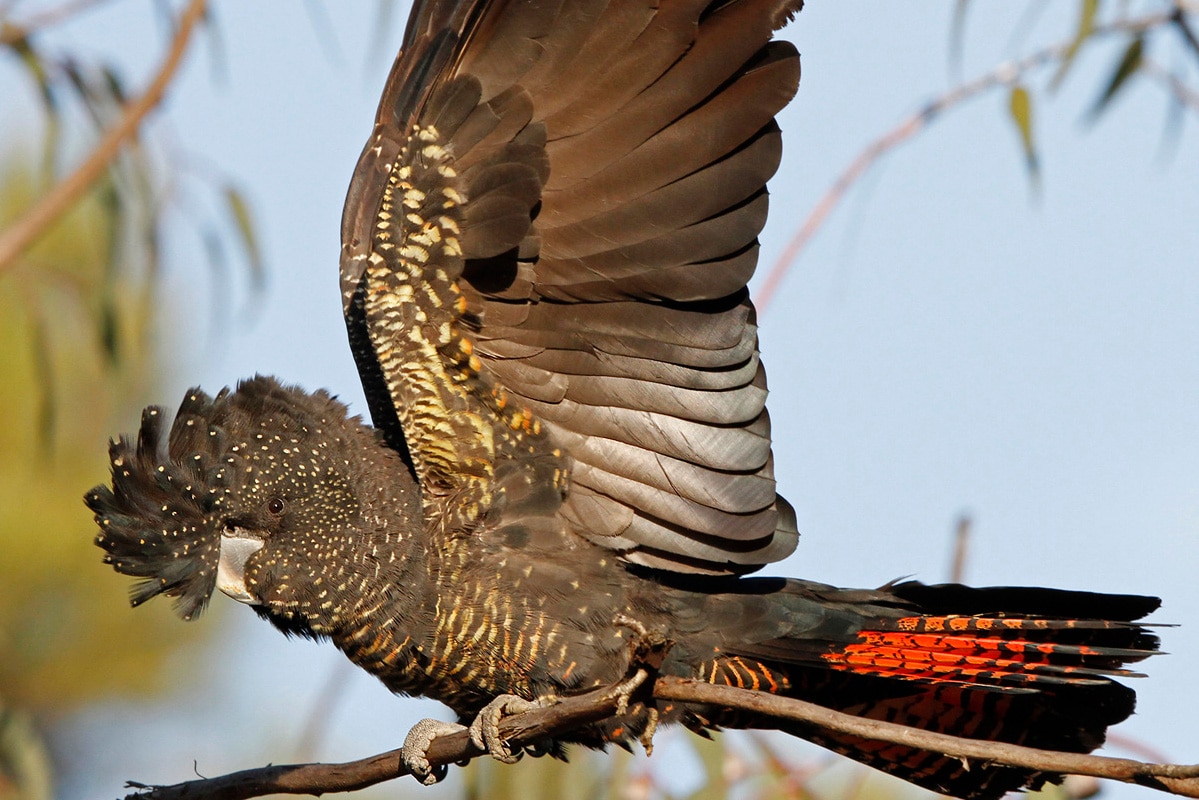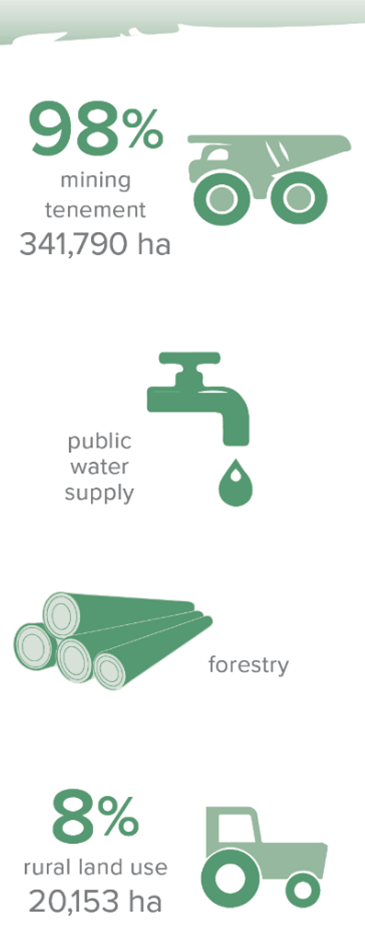Forest & Scarp
In the middle reaches of the Region are extensive areas of eucalypt forest. The Darling Scarp to the west of the forests provides an abrupt, stunning backdrop to the Coastal Plain.
This subsystem is characterised by multiple and overlapping land uses. Eighty-eight percent (87%) is vegetated, mostly in native forests, and used for a variety of purposes. Significant land uses, by area, are public water supply catchment, forestry, recreation and tourism, conservation and mining. Small areas of freehold lands in the forests are used for orchards, grazing and rural retreats.
There is a long and continuing use of the forests for timber production, including the harvesting of jarrah and marri. Logging and forest management practices are controlled under the 2014–2023 Forest Management Plan and administered by the Conservation Commission of Western Australia. There is an increasing community groundswell calling for greater protection of our Forests from forestry and mining. Groups such as the “Save Dwellingup Forest Discovery Group” the “Forest Alliance” and the Conservation Council of WA (CCWA) are actively bringing into focus the plight of our forests under a ‘business as usual’ model, and calling for greater protection of the many and long term values that a protected and restored forest would provide.

Biodiversity
All of this subsystem is within the Jarrah Forest Bioregion. This belies the richness and uniqueness of the area’s biodiversity, including its eucalypts. In western areas of the subregion, jarrah-marri forest dominates with bullich and blackbutt in the valleys, while wandoo in the eastern areas and marri woodlands dominate with powderbark wandoo occurring on breakaways. Other areas support low banksia woodlands, heathlands and granite outcrops.
Given the extent of vegetation in this area many native mammals, reptiles, amphibians and birds remain or utilise the forest, including threatened species, such as the forest red-tailed black cockatoo (Calyptorhynchus banksii naso), numbat and chuditch. The forest provides a refuge for species that have disappeared from the Swan Coastal Plain and Wheatbelt.

Chuditch
Dasyurus geoffroii
Photo: Brent Johnson

Forest Red-Tailed Black Cockatoo
Calyptorhynchus banksii naso
Photo: Keith Lightbody

Numbat
Myrmecobius fasciatus
Photo: John Lawson
Recreation
Given the proximity of the forests to the urban populations of the Perth and Peel regions, there are significant opportunities for recreation and ecotourism in the Forest SubSystem. Locals and visitors have numerous connections to the area, including use of the forests for camping, hiking (Bibbulmun Track), mountain bike riding (Munda Biddi and other trails), canoeing and picnicking. Public access is extensive given that eighty-one percent of the subregion is public land and managed by the Department of Parks and Wildlife. Key natural areas and features include Lane-Poole Reserve and Serpentine National Park. Main settlements are Dwellingup and Jarrahdale, each with links to the timber heritage of the area.
In 2021 Dwellingup won the GWN7 small tourism town category (population < 5,000), and celebrated efforts to position Dwellingup as one of Australia’s top trail and tourism towns, based around its natural values which has enabled the establishment of the world class Dwellingup Trails and Visitor Centre and Hotham Valley Tourist Railway, which meanders through the forest between Pinjarra and Dwellingup.

Mining
Over 97% of the Forest and Scarp Subsystem is included within mining tenements, mostly targeting extensive bauxite reserves in the Darling Plateau (bauxite is used to produce alumina and aluminium).
These commercial-grade bauxite deposits are associated with lateritic soils that cover the Darling Plateau and extend into the western parts of the Hotham-Williams Subsystem. Bauxite is mined by Alcoa Australia and BHP Billiton from a number of operating sites in the Region, and refined at Pinjarra, Kwinana, Worsley and Wagerup.
2016-17, alumina and bauxite sales totalled more than 14 million tonnes worth almost $5.1 billion. Production is all within the Peel-Harvey Region and are estimated to be capable of sustaining more than 50 years of alumina production at current levels. (Department of Mines and Petroleum, 2021)
Bauxite mining covers a relatively small portion of the Jarrah Forest, at any particular time (Alcoa Australia, 2014). The rehabilitation objective for mined areas is to re-establish a functional ecosystem that will fulfil the pre-mining forest land uses including conservation, timber production, water catchment and recreation. Post-mining rehabilitation includes reshaping mined areas, topsoil return, fauna habitat creation and revegetation with locally indigenous plant species.
Management of by-products from the process used to extract alumina from bauxite is a significant issue. Large quantities of sand and mud are produced which are currently stored in stockpiles close to refineries, such as Pinjarra and Wagerup on the Coastal Plain. These by-products have potential for a variety of uses including amendment of agricultural soils to improve productivity and nutrient retention, fill material and roadbase.
The variety and extent of uses of the forest provides opportunities for the community and natural resource managers. Management of the forests is largely undertaken by Parks and Wildlife, Water Corporation, mining leaseholders and local governments. Management of reserves is largely guided by Forest Management Plans prepared by the Conservation Commission of WA and implemented by Parks and Wildlife.
Statistical Snapshot
For a detailed comparison of current statistics (2020) to previous (2014) click here




Joint management agreements between Traditional Owners and the State Government will lead to greater involvement of Aboriginal people in the management of these areas.
There are numerous challenges to managing the Forest and Scarp Subsystem, some of which are made more complex by the multiple and overlapping uses of the area. Climate change is causing extensive tree deaths in some years and significant reductions in runoff into public and private water supply dams.
Phytophthora dieback, weeds and feral animals are also key threats which require careful and strategic attention. Together, all of these NRM issues require management as various user groups wish to enjoy or exploit ‘their piece of the forest’.
